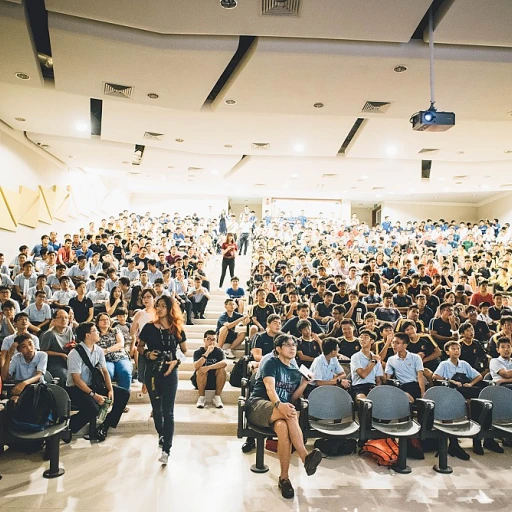Understanding the Skills Gap
Identifying the Disparity in Skills
Understanding the skills gap in the modern workforce requires a grasp of the mismatch between the skills that employees possess and the skills that employers seek. This gap has been widening over the years, due to rapid technological advancements and shifts in industry needs, leaving both employers and employees grappling with its implications. To put it simply, the skills gap emerges when the education system, workforce training, and evolving job requirements fall out of sync. While employers are on the hunt for individuals with specialized and sometimes niche skills, many current and prospective employees find themselves unequipped to meet these demands. This is exacerbated by the swift pace of technology, which often outstrips the abilities of individuals who haven't had the opportunity to continuously update their skill sets. The gap doesn’t only spring from technical or "hard skills" but also extends to "soft skills" such as communication, problem-solving, and teamwork that are covered in other sections. While technology often grabs the spotlight in discussions about skill shortages, it's essential to address this broader spectrum. Many industries are particularly affected, including technology, healthcare, and manufacturing. Each faces unique challenges that contribute to the skills gap, such as a shortage of trained healthcare workers or a lack of workers proficient in modern manufacturing techniques. To bridge this divide, a comprehensive understanding of industry-specific needs and employee capabilities is essential. Conducting skills gap analyses, discussed further on, can help organizations pinpoint discrepancies and tailor their training efforts effectively. For more on the broader technological aspect of this issue, delve deeper into bridging the digital skills divide and understand how nurturing digital literacy can address a significant part of the skills mismatch.The Role of Organizations in Skill Development
Empowering Organizations to Foster Skill Development
Organizations have a pivotal role in addressing the skills gap within the modern workforce. As we delve deeper into understanding this issue, it's essential to recognize how companies can make significant strides in nurturing talent and ensuring that employees are equipped with the necessary skills.Strategic Planning and Investment
One of the most effective ways organizations can contribute to skill development is through strategic planning and investment in training programs. This involves creating a structured learning environment that supports continuous education and skill enhancement.- Identifying key skills required for different roles within the organization.
- Allocating resources for customized training sessions, both in-house and third-party providers.
- Encouraging a culture of continuous learning where employees are motivated to pursue skill improvement.
Collaboration with Educational Institutions
Organizations can also build partnerships with educational institutions to jointly tackle the skills gap. By working closely with colleges and universities, companies can help shape curriculum that aligns with industry expectations and future job demands.- Offering internships and apprentice programs that provide hands-on experience.
- Engaging in collaborative projects to bridge theoretical knowledge with practical skills.
- Providing feedback and insights on trends and requirements in the workforce.
A Tech-Savvy Approach
As technology evolves rapidly, organizations must ensure that their workforce remains up-to-date with the latest advancements. This highlights the importance of an adaptable approach towards tech-related training.- Regularly updating training modules to include emerging technologies and tools.
- Encouraging employees to participate in external tech workshops and seminars.
- Implementing a tech-driven learning platform for flexibility and adaptability.
Upskilling and Reskilling: A Necessity
The Importance of Keeping Skills Fresh
To remain competitive in today's ever-evolving job market, both employees and organizations must prioritize upskilling and reskilling. As knowledge and technology rapidly advance, skills can quickly become outdated. This necessitates a proactive approach to learning and development.Adapting to Technological Advancements
Technological advancements have drastically changed the way we work. From automation to AI, new technologies require different skill sets. It's crucial for professionals to stay informed and open to learning opportunities to align with these changes.Continuous Learning and Professional Growth
A commitment to continuous learning ensures long-term career growth and success. Embracing a culture of learning within an organization not only benefits individual employees but also drives innovation and adaptability.Organizational Support and Resources
Organizations play a vital role in facilitating a learning environment. Providing access to training programs, workshops, and online courses helps employees acquire new skills. By fostering a supportive atmosphere, businesses can not only close the skills gap but also enhance employee satisfaction and retention. Find out how organizations are effectively empowering their teams through upskilling efforts to bridge skill deficiencies.Balancing Hard Skills and Soft Skills
While technical skills are crucial, soft skills such as communication, teamwork, and adaptability are increasingly valued in the modern workforce. Striking a balance between these skill types is essential for holistic development. In conclusion, prioritizing the development of both hard and soft skills through upskilling and reskilling is not just a necessity in today's competitive job market, but a foundational element for achieving career resilience and organizational success.Soft Skills: The Hidden Gap
Recognizing the Importance of Soft Skills
While technical skills are often at the forefront of workforce development strategies, the significance of soft skills cannot be underestimated. Soft skills, such as communication, teamwork, and emotional intelligence, are indispensable assets in today's dynamic work environment. Employees with these skills are more adaptable, better equipped to manage conflicts, and often excel in leadership roles.
The Underlying Soft Skills Deficit
Many organizations face a hidden gap when it comes to soft skills. Unlike technical skills, which are typically learned through formal education or training programs, soft skills are often developed through personal experiences and interactions. As a result, there tends to be less formal emphasis on their development within organizations. Without a conscious effort to foster these skills, businesses risk potential slowdowns in productivity and innovation.
Fostering Soft Skills Development
To address this gap, companies should consider integrating soft skills training into their professional development programs. This can be achieved through workshops, mentorship programs, and team-building exercises designed to enhance these valuable competencies. By doing so, organizations can create a more collaborative and efficient workplace.
Conducting a Skills Gap Analysis
Identifying Areas for Improvement
Conducting a skills gap analysis is instrumental in pinpointing where skill shortages exist within an organization. This structured approach assists employers in comprehending the difference between the skills their workforce currently possesses and those that are needed to meet business objectives.Carrying out a skills gap analysis involves these initial steps:
- Define Objectives: Clearly outline the overarching business goals to identify the skills required to achieve them.
- Inventory Existing Skills: Evaluate the current skill set of your workforce by collecting data through surveys, interviews, or performance assessments.
- Analyze Gaps: Determine the differences between the needed competencies and the existing ones. This highlights the areas needing attention.
Tools and Techniques for Enhancing the Workforce
Organizations must employ effective tools and methods to ensure they address skills gaps efficiently. Leveraging data analytics tools can yield beneficial insights into skill development needs. Additionally, providing access to learning and development platforms can facilitate continuous growth among employees, aligning skill sets with company needs.The Benefit of a Tailored Approach
Each organization is unique, and so are its skill requirements. A customized approach to skills gap analysis and subsequent training programs allows a company to target specific deficiencies. It’s vital to not only focus on the technical skills but also integrate soft skills training, given their crucial role that was previously highlighted.Effectively conducting a skills gap analysis isn't merely a technical exercise—it's a strategic one. It paves the way for organizations to thrive by ensuring that their workforce is keenly aligned with the ever-evolving market requirements.











